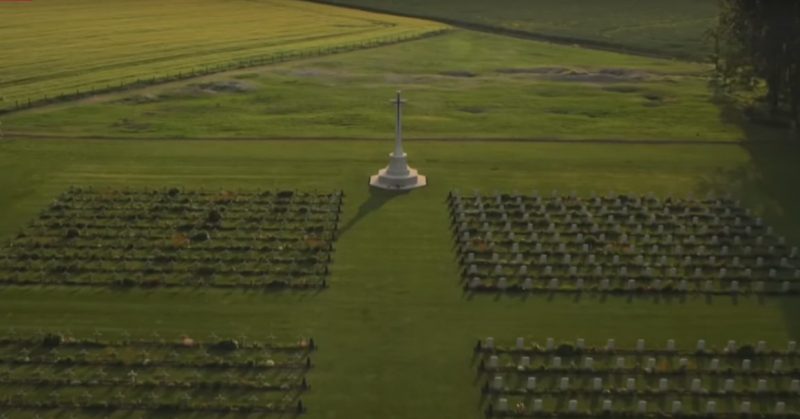On July 1, 1916, at 7:30 am, the British infantry began their advance toward the trenches of the Germans. For the first few hours, eight British soldiers died every second. By the time the sun set, 19,240 soldiers were dead, and 38,230 additional soldiers were wounded.
World War I was the worst man-made disaster in history; it was also the turning point of history. Communist Russia, Nazi Germany, World War II, and countless aspects of modern culture emerged from World War I. And the turning point of World War I was the Battle of the Somme.
Geoff Dyer notes in The Missing of the Somme, “By the time of the great battles of attrition of 1916-17 mass graves were dug in advance of major offenses. Singing columns of soldiers fell grimly silent as they marched by these gaping pits en route to the front-line trenches.”
William Philpott, in Three Armies on the Somme: The First Battle of the Twentieth Century, says that the Battle of the Somme was “the cradle of modern combat”. It proved that some new industrial wars would only be won by attrition. The German’s referred to it as Materialschlacht, a battle of materials. Seizing land was not as important as exhausting a country’s material and human resources.
The Second World War would remove the distinction between “front lines” and “home front”. Randolph Bourne wrote in 1918, “War is the health of the state.” The relationship between the government, the economy, and the individual was altered forever.
Philpott also recognized that World War I was a “war of invention”. “Gas, flame-throwers, grenade launchers, sub-machine guns, trench mortars, and cannon, fighter, and bomber aircraft, tanks, and self-propelled artillery – all made their battlefield debuts between 1914 and 1918.”
The French remember Verdun in much the way the British remember Somme. Verdun was where the war of attrition really began. The Battle of the Somme was partly entered into to relieve some of the pressure on Verdun and demonstrate Britain’s willingness to share the burden of the war.
In December 1915, Winston Churchill said, “In this war, the tendencies are far more important than the episodes. Without winning any sensational victories we may win this war.” Though the war began with a comedy of errors, once entered into, the war became worth winning. The Somme set the tone for the rest of the war. Germany began submarine warfare to stop the flow of materials to the British trenches. That submarine warfare brought the U.S. forces into the war. With their entry into the war, the U.S. became a force in global politics for the next 100 years.
The Somme ended on November 18. By that point, a million men on both sides had died. 72,000 British and Commonwealth soldiers were never found. Twenty-two miles of the front had been moved all of six miles.
Because of the Somme, Germany’s will was broken, and the outcome of the war was clear. But the ripples moving forward in time were not so easily discerned. One of the unanticipated consequences was the development of an Austrian corporal, injured on his third day of fighting at the Somme, named Adolph Hitler.
As Dyer wrote, the Battle of the Somme is “deeply buried in its own aftermath.” The same could be said about Europe.
https://www.youtube.com/watch?v=Ab653F-fze0
